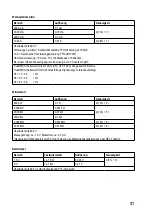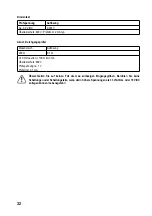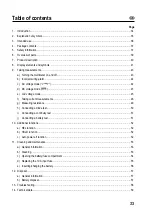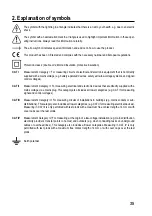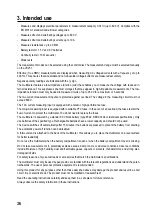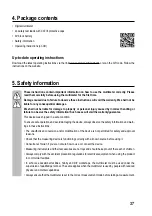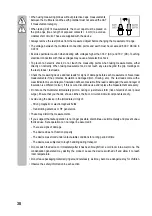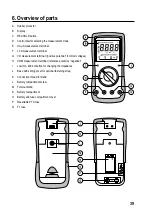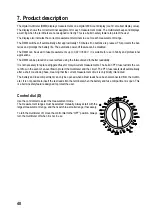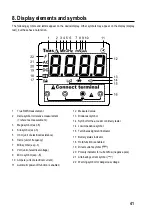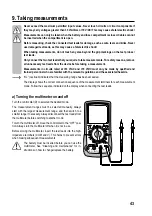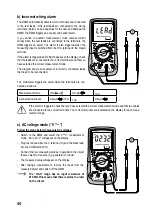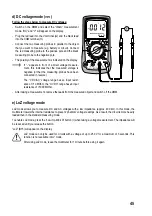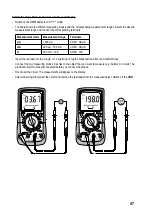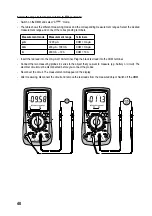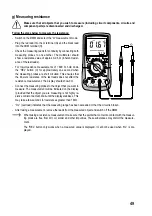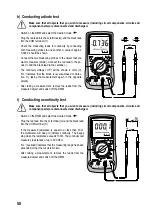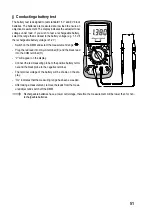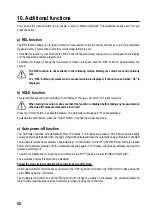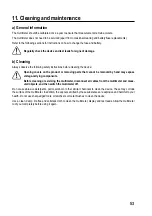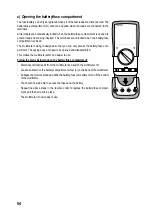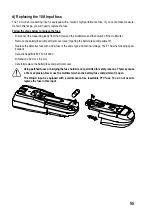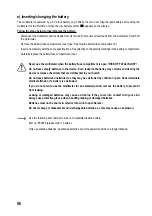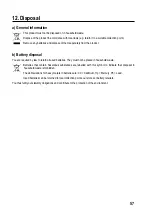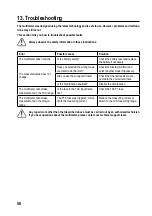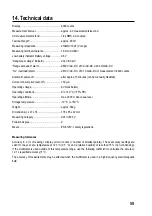
45
d) DC voltage mode (
)
Follow the steps below to measure DC voltages:
- Switch on the DMM and select the “V
” measurement
mode. “DC” and “V” will appear on the display.
- Plug the red lead into the V terminal (G) and the black lead
into the COM terminal (H).
- Connect the two measuring probes in parallel to the object
that you want to measure (e.g. battery or circuit). Connect
the red measuring probe to the positive pole and the black
measuring probe to the negative pole.
- The polarity of the measurement is indicated on the display.
If “-” appears in front of a direct voltage measure-
ment, this indicates that the measured voltage is
negative (or that the measuring probes have been
connected in reverse).
The “V DC/AC” voltage range has an input resist-
ance of >10 MOhm; the “mV DC” range has an input
resistance of >1000 MOhm.
- After taking a measurement, remove the leads from the measured object and switch off the DMM.
e) LoZ voltage mode
LoZ mode allows you to measure DC and AC voltages with a low impedance (approx. 400 kΩ). In this mode, the
multimeter lowers the internal resistance to prevent ‘phantom’ voltage readings. As a result, the circuit is more heavily
loaded than in the standard measuring mode.
To enable LoZ mode, press the “Low imp.400 kΩ” button (I) when taking a voltage measurement. The impedance will
be reduced until you release the button.
“LoZ” (B15) will appear on the display.
LoZ mode can only be used for circuits with a voltage of up to 250 V for a maximum of 3 seconds. This
function is not available in mV mode.
After using LoZ mode, leave the multimeter for 1 minute before using it again.

